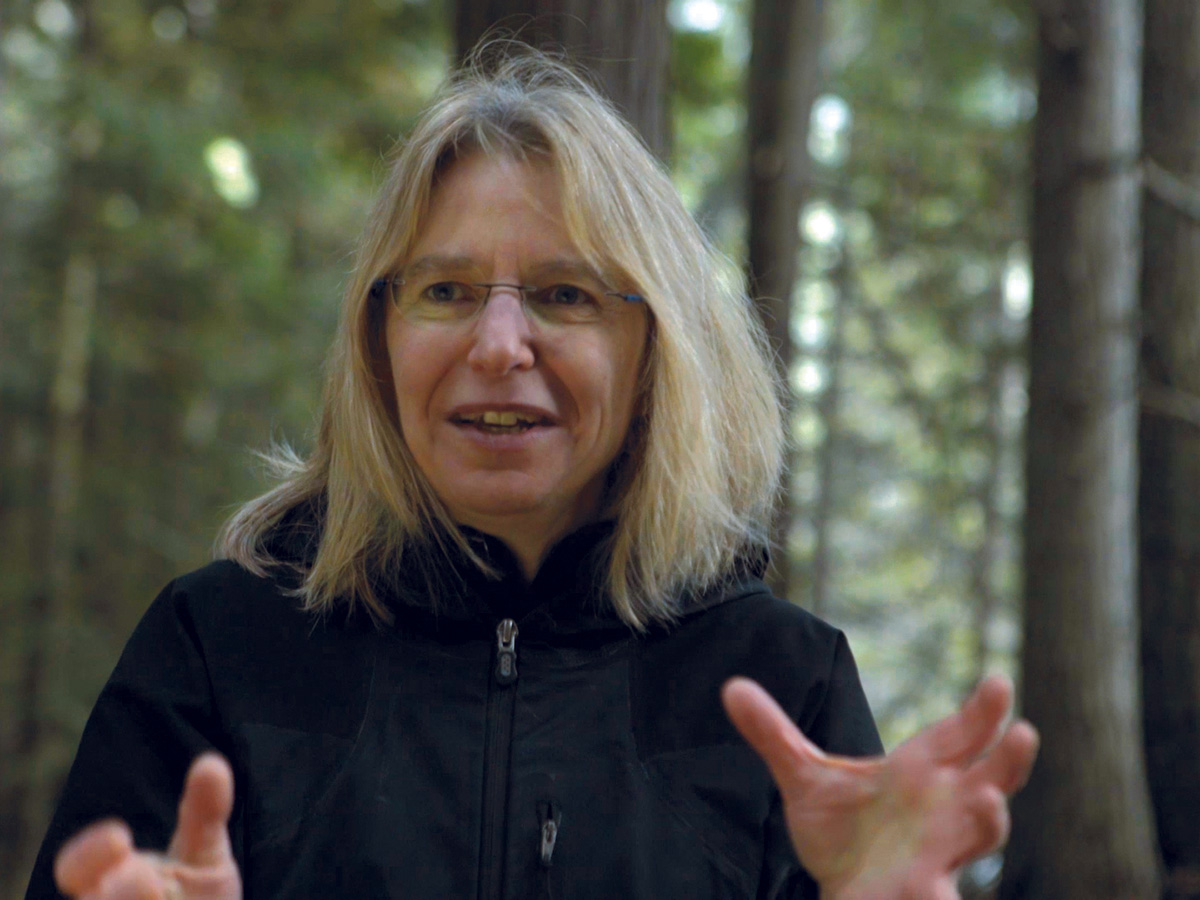Science Spotlight: Dr. Suzanne Simard

Dr. Suzanne Simard PHOTO Jdoswim/Wikimedia Commons (CC BY-SA 4.0)
Imagine a world where plants are connected by underground communication networks similar to human neural networks; where network hubs — the largest, oldest trees — regulate the movement of food, defense signals and knowledge; a world where the sharing of resources helps the community thrive.
This is the “wood wide web,” the term University of British Columbia forest ecologist Dr. Suzanne Simard coined to describe the information-rich fungal networks she and her collaborators discovered connecting trees in forests and woodlands. (Other mycorrhizal networks have since been discovered in prairies and grasslands.) Simard’s research on these underground communication pathways and their “mother tree” hubs has revolutionized our understanding of plant communities and informs popular literature, including Peter Wohlleben’s best-selling book, “The Secret Life of Trees,” and Richard Powers’ Pulitzer Prize–winning novel, “The Overstory.”
Simard’s fascination with fungal mycelia and the roles they play began during her childhood exploring British Columbia’s temperate rainforests. Her 1997 Ph.D. thesis focused on her theory that mycorrhizae allowed trees to communicate and share resources. Funders were not impressed, and Simard had to scrounge for supplies and equipment. Undeterred, she planted seedlings of three native tree species — paper birch (Betula papyrifera), Douglas fir (Pseudotsuga menziesii) and western red cedar (Thuja plicata) — and injected some with C14, a radioactive isotope of carbon, to trace carbohydrate movement.
When she went back to scan the seedlings with a borrowed Geiger counter, a mother grizzly bear chased Simard away from her plots. (Let no one say that field research isn’t exciting!) When Simard returned — bear spray in hand — the Geiger counter clicked like mad on the seedlings she hadn’t injected with C14, proof that the trees were sharing carbon below the surface.
Simard’s findings were published in the prestigious journal Nature, giving her work “instant” credibility. In the decades since, she and her lab group have fleshed out our understanding of the wood wide web. Among their findings: Mother trees can recognize their own offspring and preferentially route nutrients and information to kin. When they are injured or die, these elders “dump” carbon and defense compounds into the network, in essence uploading food and information stores for future generations.
The group’s newest research shows that half of the carbon in a forest is stored in the soil, maintained in part by the networks managed by mother trees. “When those forests are clearcut, about half of that carbon returns to the atmosphere — that’s a huge problem,” Simard says. “We’re looking now at how we can harvest forests to retain mother trees.”
We can grow healthy mycorrhizal networks too, says Simard, if we inoculate our landscapes with native plants and their fungal partners: “Embedding our cultivated plants within natural-habitat type gardens is our best hope for restoring those networks and fostering resilience,” she says. Plugging into those natural networks benefits our gardens and our planet — and humans too.
For more on mycorrhizae, check out this “Botany 101” article.
Susan J. Tweit is the author of “Walking Nature Home” and several other books. Learn more and read her work at susanjtweit.com

